The Moderating Effect of Compassionate Mindfulness on the Psychological Needs and Emotions of Generation Y in the 21st Century in Taiwan
Abstract
:1. Introduction
2. Materials and Methods
2.1. Data Source and Preliminary Findings
2.2. Verification of Mental Health Variables
2.2.1. Psychological Needs
2.2.2. Optimistic Emotions
2.3. Data Analysis
3. Results
3.1. Difference Analysis of Variance for the Effects of Period and ‘Compassionate Mindfulness’ on Mental Health
3.2. Difference Analysis of Variance for the Effects of Period, ‘Demographic Variable’ and ‘Compassionate Mindfulness’ on Psychological Needs and Emotions
4. Discussion
5. Conclusions
6. Limitations of the Study and Future Work
Author Contributions
Funding
Institutional Review Board Statement
Informed Consent Statement
Data Availability Statement
Acknowledgments
Conflicts of Interest
References
- Economic Independence Is Difficult for Millennials in the U.S. Anus News. 2013. Available online: https://news.cnyes.com/news/id/1831001 (accessed on 15 November 2021).
- Bresman, H.; Rao, V.D. A Survey of 19 Countries Shows How Generations X, Y, and Z Are—And Aren’t—Different. Harvard Business Review. 2017. Available online: https://hbr.org/2017/08/a-survey-of-19-countries-shows-how-generations-x-y-and-z-are-and-arent-different (accessed on 28 November 2021).
- Strauss, W.; Generations, N.H. The History of America’s Future, 1584 to 2069; William Morrow: New York, NY, USA, 1992. [Google Scholar]
- Steiner, S. Generation Y in the Workplace. Recruitment Trends March 2016. Available online: https://talentor.com/blog/generation-y-in-workplace (accessed on 7 November 2021).
- Ministry of Health and Welfare. Number of People Taking Antidepressants 2021. Available online: https://dep.mohw.gov.tw/dos/cp-1720-9734-113.html (accessed on 12 November 2021).
- National Health Insurance Administration. Available online: https://www.nhi.gov.tw/Content_List.aspx?n=D529CAC4D8F8E77B&topn=23C660CAACAA159D (accessed on 12 November 2021).
- National Development Council. Available online: https://pop-proj.ndc.gov.tw/dataSearch4.aspx?uid=3109&pid=59 (accessed on 12 November 2021).
- Executive Yuan. National Mental Health Plan (2) 106-110. No. 1050043638 Approved Version; Executive Yuan: Taipei, China, 2016.
- Hu, M.L.; Chen, T.C.; Huang, T.Y. Overview of Mindfulness Based Stress Reduction. Chang Gung Nurs. 2017, 289, 588–598. [Google Scholar]
- Tang, Y.Y.; Holzel, B.K.; Posner, M.I. The neuroscience of mindfulness meditation. Nat. Rev. Neurosci. 2015, 16, 213–225. [Google Scholar] [CrossRef] [PubMed]
- Liang, K.C. Psychology, 1st ed.; Taiwan University: Taipei, China, 2018; pp. 416, 420–421, 544–545. [Google Scholar]
- Huang, F.Y. A Practical Review of Mindfulness Mechanisms on Mindfulness Education in Taiwan. Res. Appl. Psychol. 2019, 70, 41–76. [Google Scholar]
- Bodhi, B. What does mindfulness really mean? A canonical perspective. Fuyan Buddh. Stud. 2014, 9, 1–22. [Google Scholar] [CrossRef]
- Zuniga, D.; Torres-Sahli, M.; Nitsche, P.; Echeverria, G.; Pedrals, N.; Grassi, B.; Cisternas, M.; Rigotti, A.; Bitran, M. Reduced burnout and higher mindfulness in medical students after a self-care program during the COVID-19 pandemic. Rev. Med. De Chile 2021, 149, 846–855. [Google Scholar] [CrossRef]
- Hsu, T.C.; Wu, C.C.; Lai, P.Y.; Syue, L.S.; Lai, Y.Y.; Ko, N.Y. Nursing Experience of Caring for a Patient With COVID-19 During Isolation. J. Nurs. 2020, 67, 111–119. [Google Scholar]
- Siao, S.Y. Health care of medical staff’s physical and mental stress. Health Welf. 2021, 28, 18–21. [Google Scholar]
- Abbott, R.A.; Whear, R.; Rodgers, L.R.; Bethel, A.; Coon, J.T.; Kuyken, W.; Stein, K.; Dickens, C. Effectiveness of mindfulness-based stress reduction and mindfulness based cognitive therapy in vascular disease: A systematic review and meta-analysis of randomised controlled trials. J. Psychosom. Res. 2014, 76, 341–351. [Google Scholar] [CrossRef] [Green Version]
- Shin, Z.B.; Jin, S.R. The qualitative study of “mindfulness group” toward the self-care and counseling practice of counselor interns. Bull. Educ. Psychol. 2010, 42, 163–184. [Google Scholar] [CrossRef]
- Schonert-Reichl, K.A.; Oberle, E.; Lawlor, M.S.; Abbott, D.; Thomson, K.; Oberlander, T.F.; Diamond, A. Enhancing cognitive and social-emotional development through a simple-to-administer mindfulness-based school program for elementary school children: A randomized controlled trial. Dev. Psychol. 2015, 51, 52–66. [Google Scholar] [CrossRef] [Green Version]
- Chen, T.L.; Chou, F.H.; Wang, H.H. Mindfulness: A Concept Analysis. J. Nurs. 2016, 63, 113–119. [Google Scholar]
- Fredrickson, F.L.; Boulton, A.J.; Firestine, A.M.; Cappellen, P.V.; Algoe, S.B.; Brantley, M.M.; Kim, S.L.; Brantley, J.; Salzberg, S. Positive Emotion Correlates of Meditation Practice: A Comparison of Mindfulness Meditation and Loving-Kindness Meditation. Mindfulness 2017, 8, 1623–1633. [Google Scholar] [CrossRef] [PubMed]
- Grossman, P.; Niemann, L.; Schmidt, S.; Walach, H. Mindfulness-based stress reduction and health benefits. A meta-analysis. J. Psychosom. Res. 2004, 57, 35–43. [Google Scholar] [CrossRef]
- Brown, K.W.; Ryan, R.M.; Creswell, J.D. Mindfulness: Theoretical foundations and evidence for its salutary effects. Psychol. Inq. 2007, 18, 211–237. [Google Scholar] [CrossRef]
- Langdridge, D. Phenomenology. In The Palgrave Handbook of Critical Social Psychology; Gough, B., Ed.; Palgrave Macmillan: London, UK, 2017; pp. 165–183. [Google Scholar]
- Lee, W.L. “What is the human mind?”: A brief introduction to phenomenological psychology. Dong Hwa Humanit. Soc. Sci. J. 2014, 4, 2. [Google Scholar]
- Lee, W.L. From Positivist Psychology to Praxical Psychology: Localizing Phenomenological Pyschology. Taiwan Couns. Q. 2016, 8, 1–15. [Google Scholar]
- Kabat-Zinn, J. Mindfulness-based interventions in context: Past, present, and future. Clin. Psychol. Sci. Pract. 2003, 10, 144–156. [Google Scholar] [CrossRef]
- Maslow, A.H. The Father Reaches of Human Nature; Viking: New York, NY, USA, 1971. [Google Scholar]
- Yu, M.N.; Liu, Y.J.; Li, R.H. The Practical Usage of Cutoff Score in the Taiwanese Depression Scale. J. Educ. Res. Dev. 2008, 4, 231–257. [Google Scholar]
- Muris, P.; Schmidt, H.; Lambrichs, R.; Meesters, C. Protective and vulnerability factors of depression in normal adolescents. Behav. Res. Ther. 2001, 39, 555–565. [Google Scholar] [CrossRef]
- Hammen, C. Stress generation in depression: Reflections on origins, research, and future directions. J. Clin. Psychol. 2006, 62, 1065–1082. [Google Scholar] [CrossRef]
- Lopez, S.J.; Pedrotti, J.T.; Snyder, C.R. Positive Psychology: The Scientific and Practical Explorations of Human Strengths, 3rd ed.; Sage Publication: Southend Oaks, CA, USA, 2015; ISBN 978-986-5668-43-3. [Google Scholar]
- Seligman, M.E.P.; Peterson, C. Positive clinical psychology. In A Psychology of Human Strengths: Fundamental Questions and Future Directions for a Positive Psychology; Aspinwall, L.G., Staudinger, U.M., Eds.; American Psychological Association: Washington, DC, USA, 2003; pp. 305–317. [Google Scholar]
- Galante, J.; Galante, I.; Bekkers, M.J.; Gallacher, J. Effect of kindness-based meditation on health and well-being: A systematic review and meta-analysis. J. Consult. Clin. Psychol. 2014, 82, 1101–1114. [Google Scholar] [CrossRef] [PubMed]
- Klimecki, O.M.; Leiberg, S.; Lamm, C.; Singer, T. Functional neural plasticity and associated changes in positive affect after compassion training. Cereb. Cortex 2013, 23, 1552–1561. [Google Scholar] [CrossRef] [PubMed] [Green Version]
- Weng, H.Y.; Fox, A.S.; Shackman, A.J.; Stodola, D.E.; Caldwell, J.Z.; Olson, M.C.; Rogers, G.M.; Davidson, R.J. Compassion training alters altruism and neural responses to suffering. Psychol. Sci. 2013, 24, 1171–1180. [Google Scholar] [CrossRef] [PubMed] [Green Version]
- Fu, Y.C.; Tu, S.H. Taiwan Social Change Survey (Round 5, Year 5): Religion (C00157_2); Available from Survey Research Data Archive; Academia Sinica: Taipei, China, 2010. [Google Scholar] [CrossRef]
- Fu, Y.C.; Chang, Y.H.; Tu, S.H.; Liao, P.S. Taiwan Social Change Survey (Round 6, Year 5): Religion (C00310_2); Available from Survey Research Data Archive; Academia Sinica: Taipei, China, 2015. [Google Scholar] [CrossRef]
- Fu, Y.C. Taiwan Social Change Survey (Round 7, Year 4): Religion (D00170_1); Available from Survey Research Data Archive; Academia Sinica: Taipei, China, 2020. [Google Scholar] [CrossRef]
- Dai, S.Y. Handbook of Commonly Used Psychological Assessment Scale; People’s Military Medical Press: Beijing, China, 2010; pp. 13–19; discussion 186–188. [Google Scholar]
- Hsu, H.Y. The revision of the Interpersonal Trust Scale and its application in college students. Cult. Educ. Mater. 2010, 20, 222–223. [Google Scholar]
- Edwards, A.L. Manual of the Edwards Personal Preference Schedule; Psychological Corp.: New York, NY, USA, 1954. [Google Scholar]
- Yang, K.S.; Lu, L. Social- and Individual-oriented Self-actualizers: Conceptual Analysis and Empirical Assessment of their Psychological Characteristics. Indig. Psychol. Res. 2005, 23, 71–143. [Google Scholar]
- SPSS Inc. SPSS for Windows, Version 16.0; SPSS Inc.: Chicago, IL, USA, 2007.
- Ford, B.Q.; Shallcross, A.J.; Mauss, I.B.; Floerke, V.A.; Gruber, J. Desperately seeking happiness: Valuing happiness is associated with symptoms and diagnosis of depression. J. Soc. Clin. Psychol. 2014, 33, 890–905. [Google Scholar] [CrossRef]
- Catalino, L.I.; Algoe, S.B.; Fredrickson, B.L. Prioritizing positivity: An effective approach to pursuing happiness? Emotion 2014, 14, 1155–1161. [Google Scholar] [CrossRef] [Green Version]
- Ye, F.R. Millennials: The First Generation to Practice Spiritual Life, Opening Up New Business Momentum of “Life Cycle Recharge” Stans Foundation Chinese Consumer Center. Available online: http://ccc.stansfoundation.org/?p=5095 (accessed on 19 April 2022).
- Seppala, E.M.; Hutcherson, C.A.; Nguyen, D.T.; Doty, J.R.; Gross, J.J. Loving-kindness meditation: A tool to improve healthcare provider compassion, resilience, and patient care. J. Compassionate Health Care 2014, 1, 5. [Google Scholar] [CrossRef]
- Zeng, X.; Chiu, C.P.; Wang, R.; Oei, T.P.; Leung, F.Y. The effect of loving-kindness meditation on positive emotions: A meta-analytic review. Front. Psychol. 2015, 6, 1693. [Google Scholar] [CrossRef] [Green Version]
- Ministry of the Interior 2020. Available online: https://ws.moi.gov.tw/001/Upload/OldFile/news_file/109%E5%B9%B4%E7%AC%AC12%E9%80%B1%E5%85%A7%E6%94%BF%E7%B5%B1%E8%A8%88%E9%80%9A%E5%A0%B1_%E6%95%99%E8%82%B2%E7%A8%8B%E5%BA%A6.pdf) (accessed on 28 November 2021).
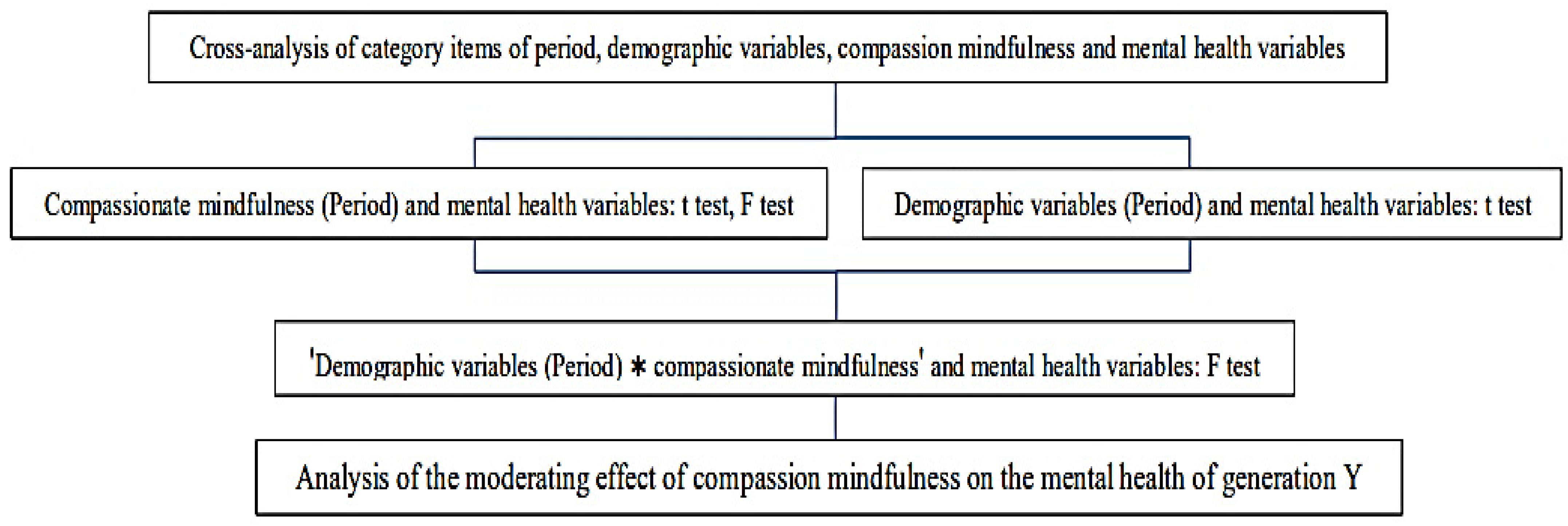
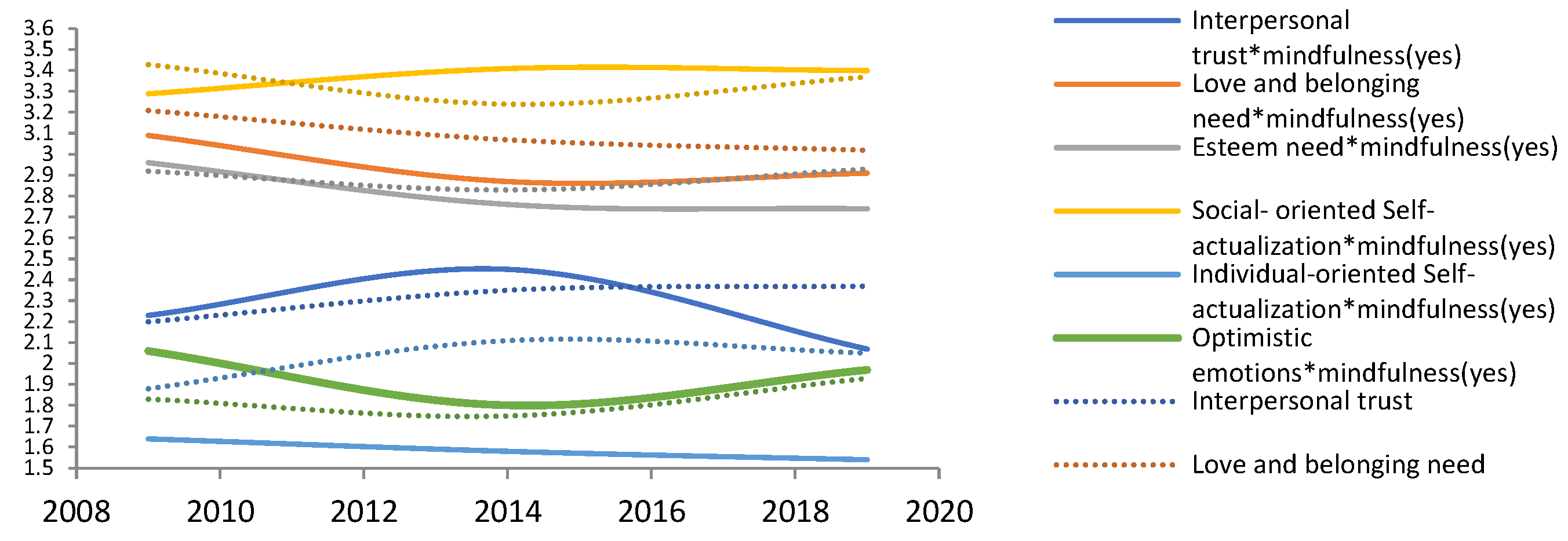
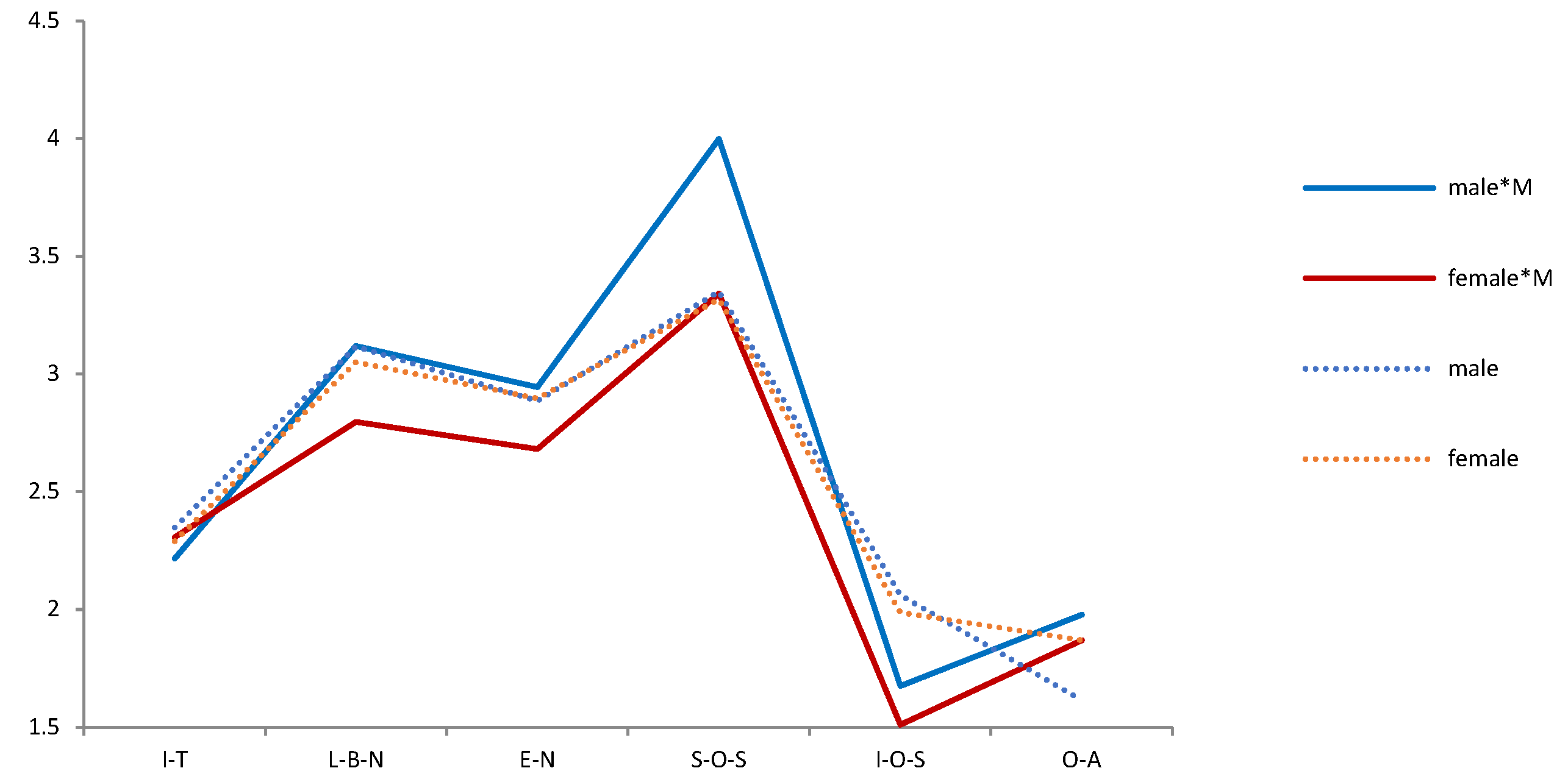
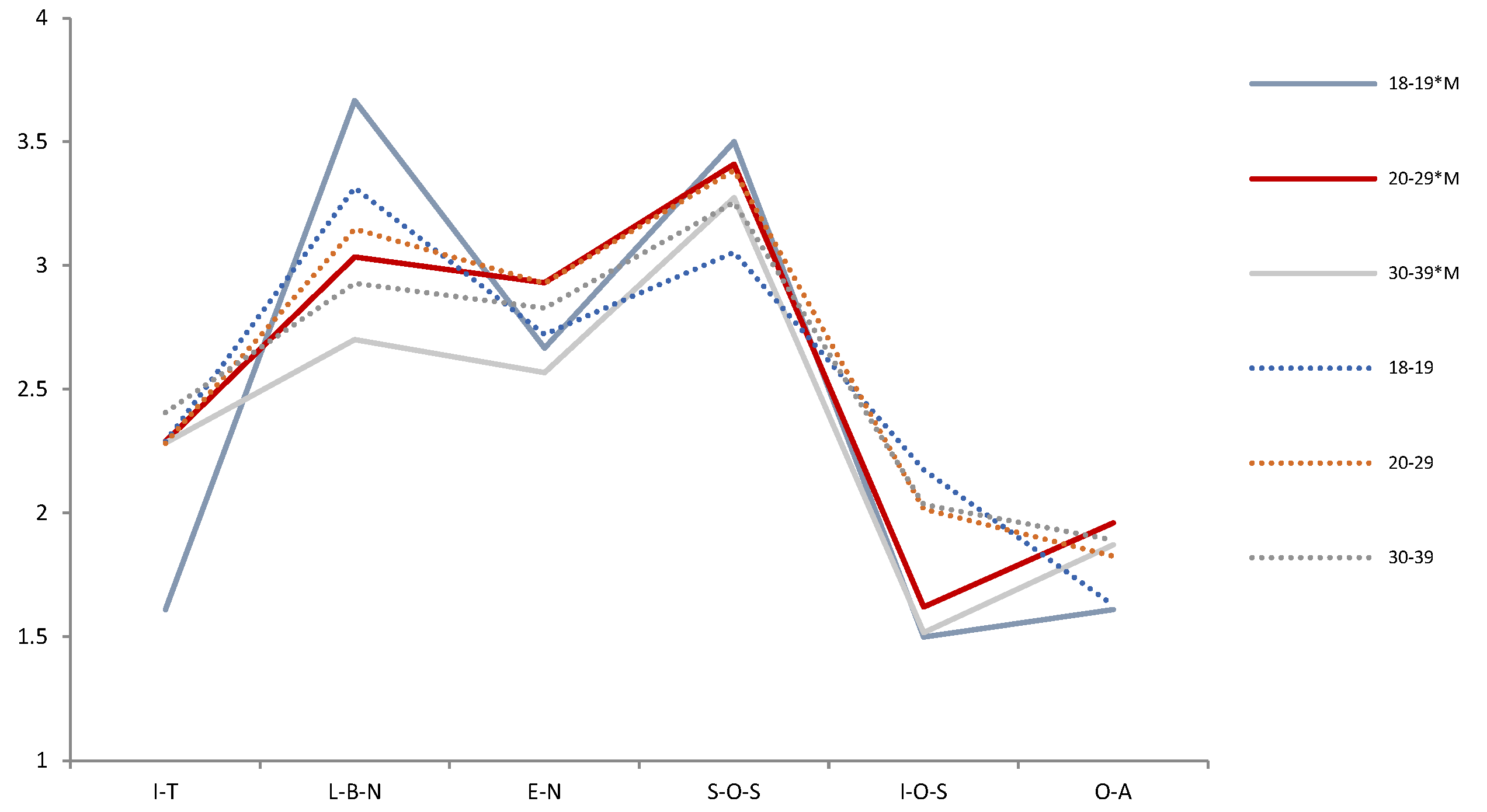
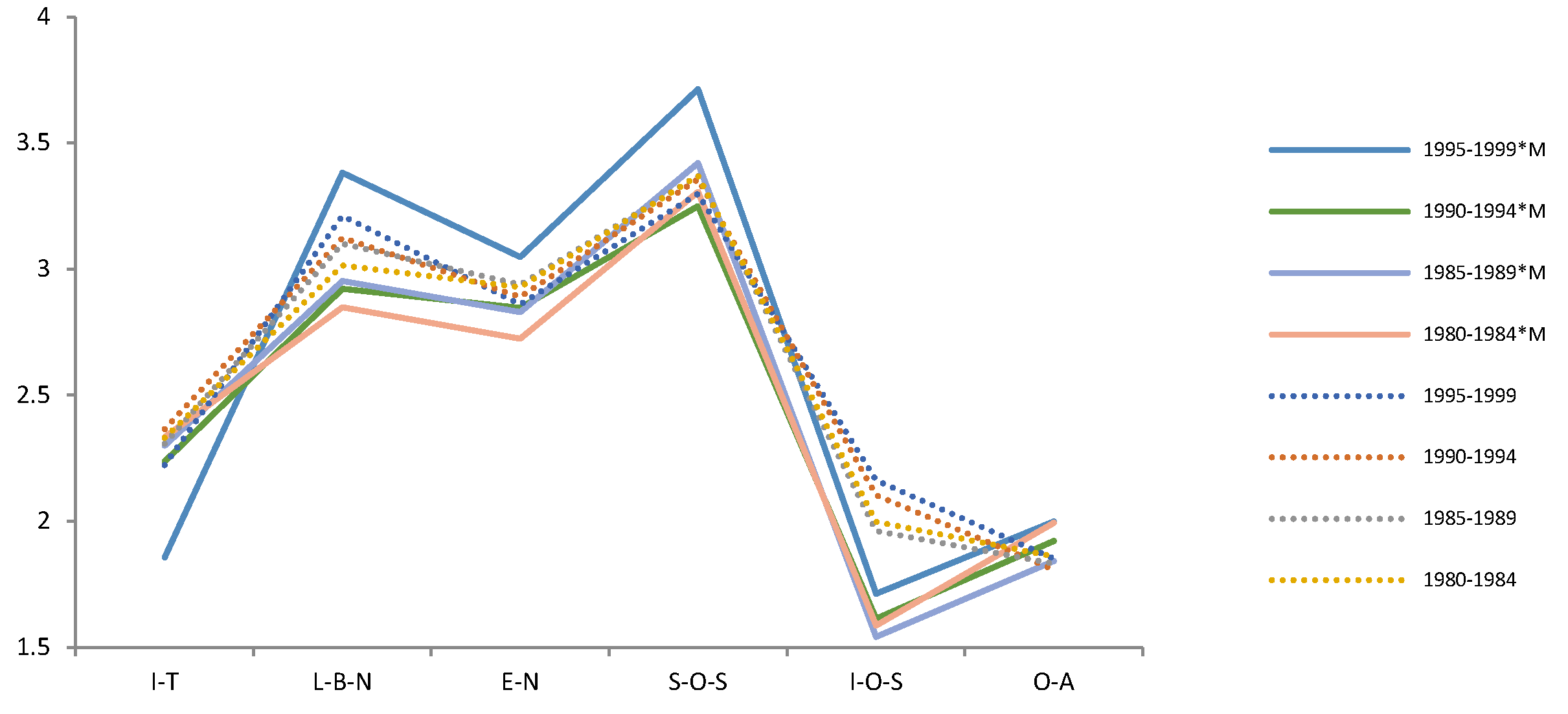
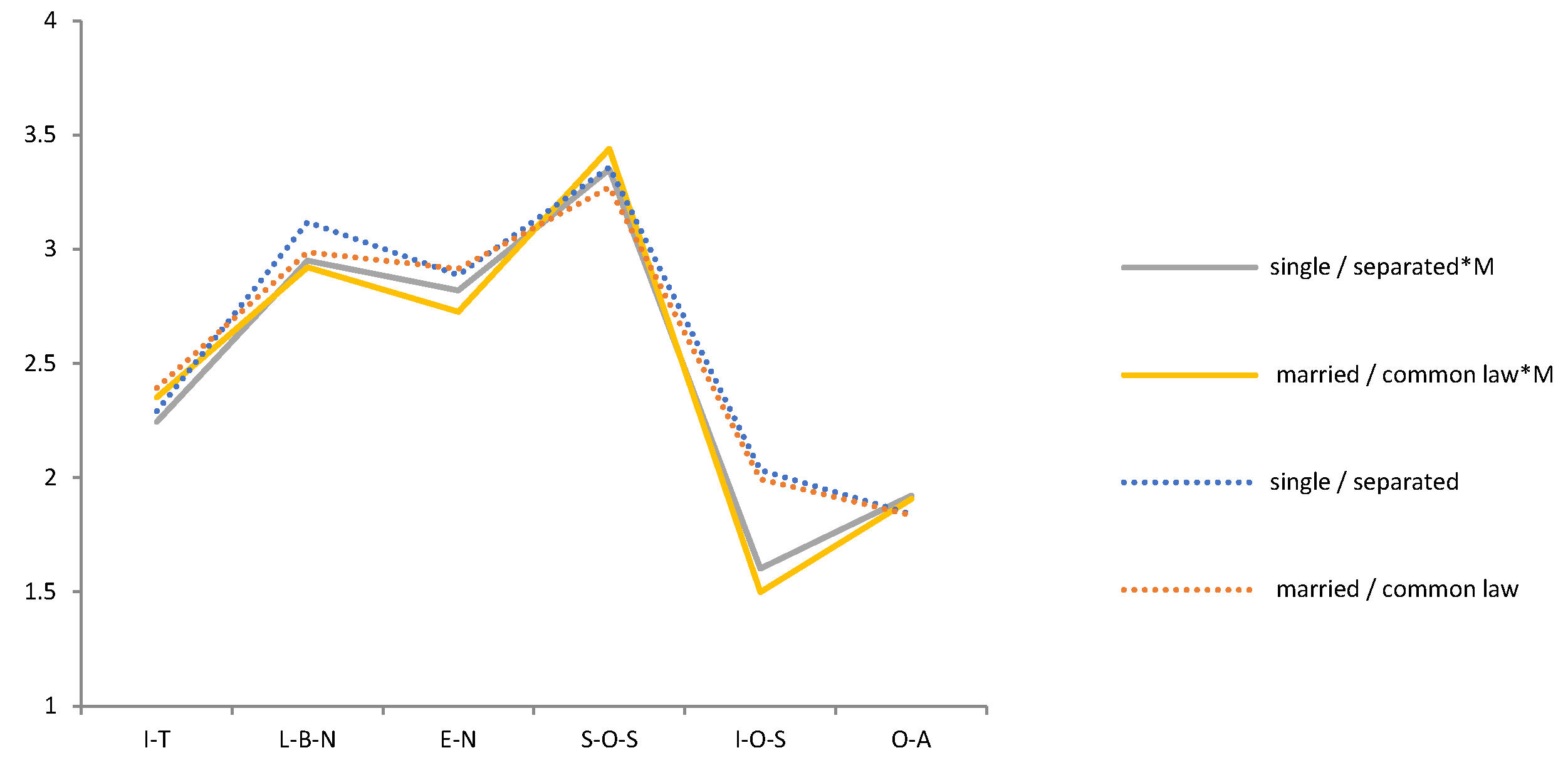
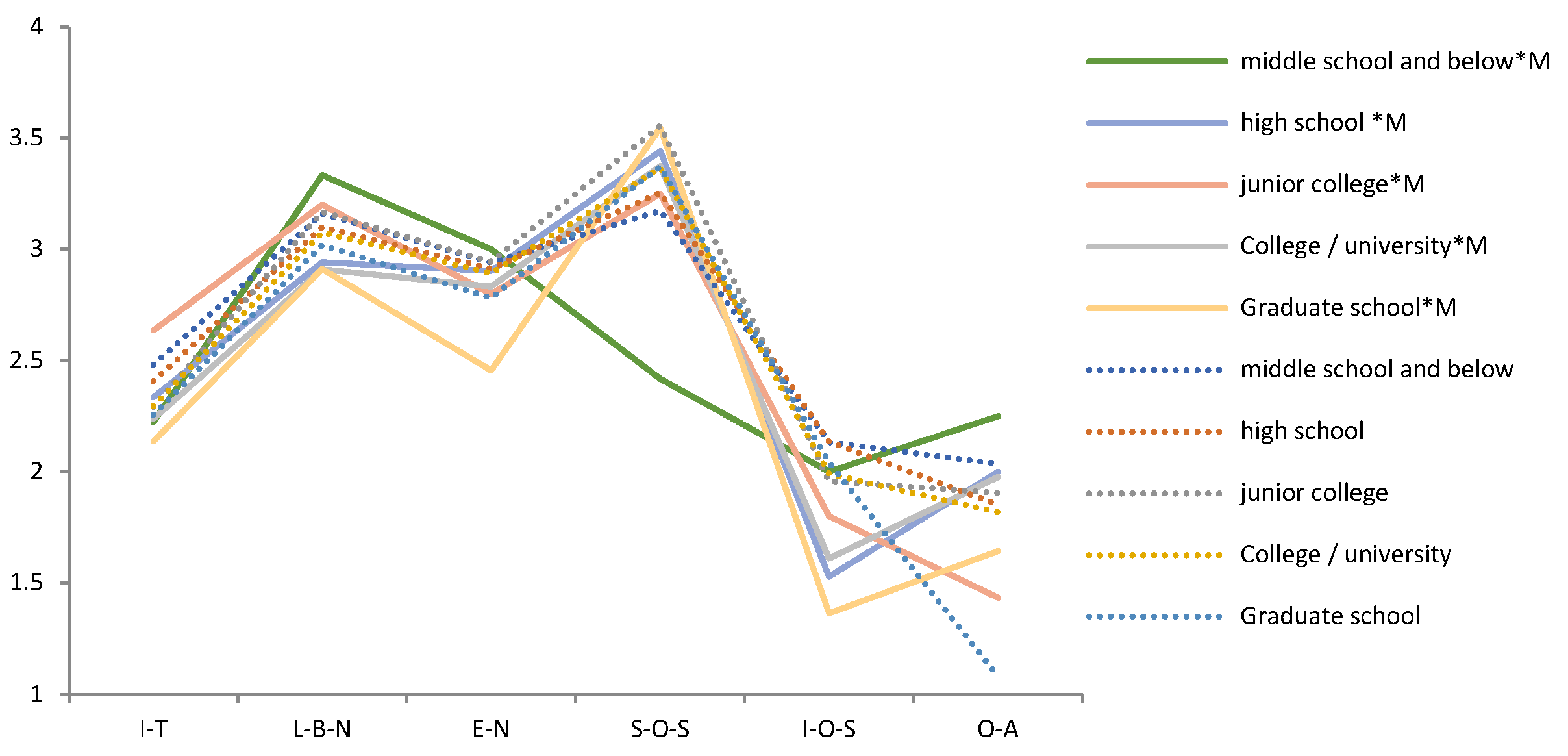
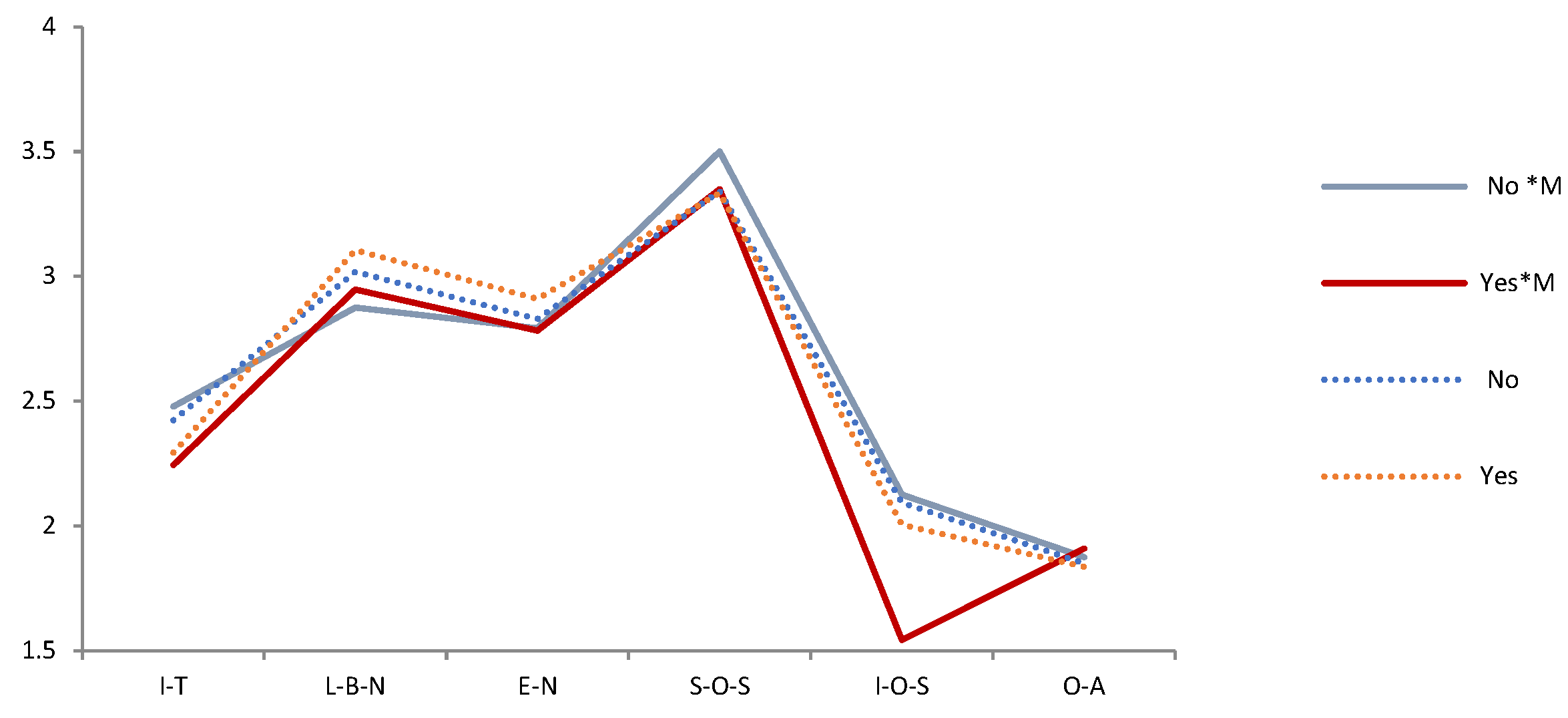
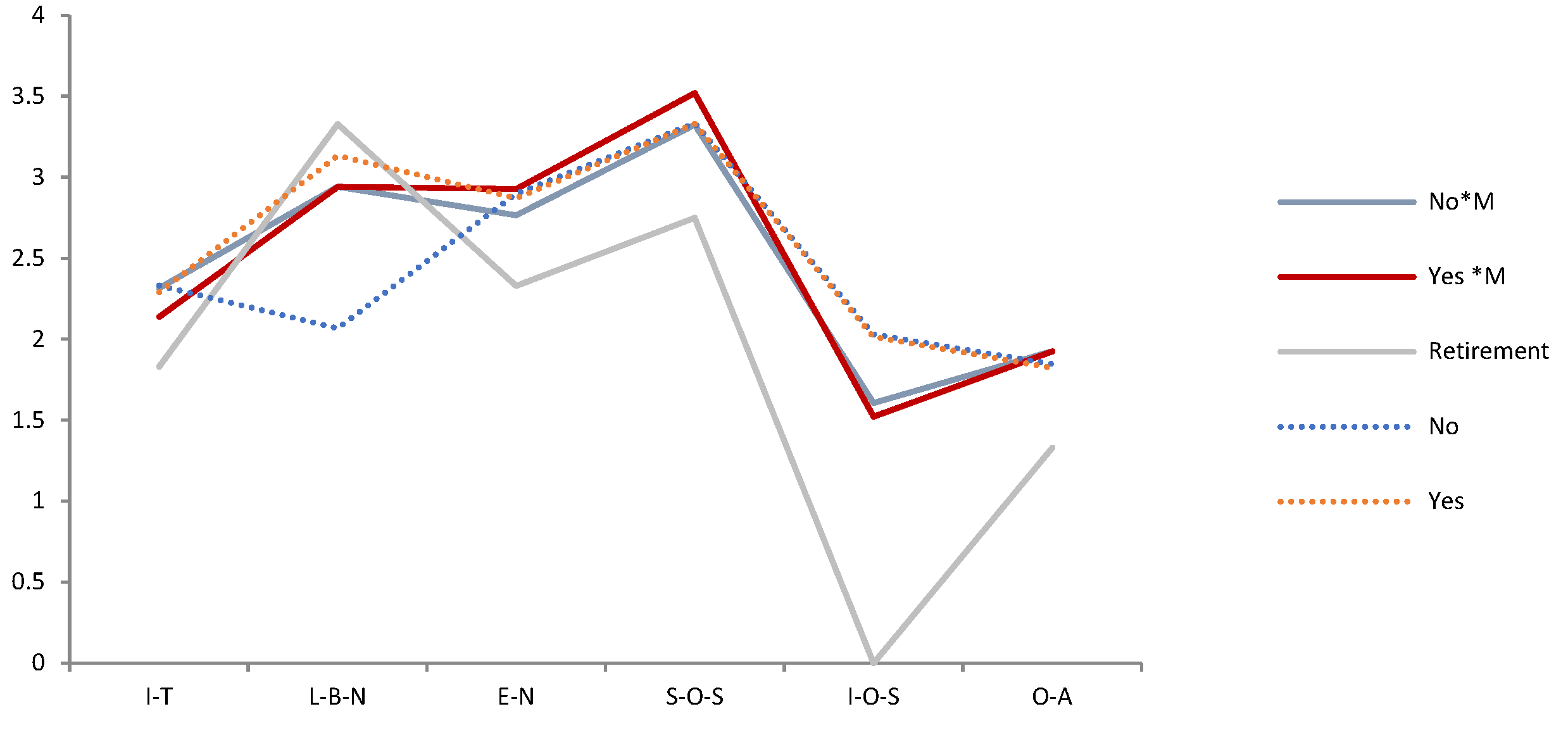
| Demographic Variables | 2009 (n = 385) | 2014 (n = 564) | 2019 (n = 591) | 2009–2019 (n = 1540) | ||||
|---|---|---|---|---|---|---|---|---|
| Number | Percent | Number | Percent | Number | Percent | Number | Percent | |
| Sex | ||||||||
| Male | 214 | 55.58 | 303 | 53.72 | 298 | 50.42 | 815 | 52.92 |
| Female | 171 | 44.42 | 261 | 46.28 | 293 | 49.58 | 725 | 47.08 |
| Age (years) | ||||||||
| 18–19 | 0 | 0 | 42 | 7.45 | 0 | 0 | 42 | 2.73 |
| 20–29 | 385 | 100 | 345 | 61.17 | 286 | 48.39 | 1016 | 65.97 |
| 30–39 | 0 | 0 | 177 | 31.38 | 305 | 51.61 | 482 | 31.3 |
| Cohort | ||||||||
| 1995–1999 | 0 | 0 | 42 | 7.45 | 115 | 19.46 | 157 | 10.19 |
| 1990–1994 | 0 | 0 | 172 | 30.5 | 148 | 25.04 | 320 | 20.78 |
| 1985–1989 | 198 | 51.43 | 173 | 30.67 | 135 | 22.84 | 506 | 32.86 |
| 1980–1984 | 187 | 48.57 | 177 | 31.38 | 193 | 32.66 | 557 | 36.17 |
| Marital status | ||||||||
| single/separated | 347 | 90.13 | 441 | 78.19 | 389 | 65.82 | 1177 | 76.43 |
| married/common law | 38 | 9.87 | 118 | 20.92 | 184 | 31.13 | 340 | 22.08 |
| divorced/spouse deceased | 0 | 0 | 5 | 0.89 | 18 | 3.05 | 23 | 1.49 |
| Education level | ||||||||
| Middle school and below | 16 | 4.16 | 15 | 2.66 | 22 | 3.72 | 53 | 3.44 |
| High school | 87 | 22.6 | 120 | 21.28 | 110 | 18.61 | 317 | 20.58 |
| Junior college | 40 | 10.39 | 48 | 8.51 | 41 | 6.94 | 129 | 8.38 |
| College/university | 216 | 56.1 | 323 | 57.27 | 342 | 57.87 | 881 | 57.21 |
| Graduate school | 26 | 6.75 | 58 | 10.28 | 76 | 12.86 | 160 | 10.39 |
| Religious belief | ||||||||
| No | 85 | 22.08 | 95 | 16.84 | 125 | 21.15 | 305 | 19.81 |
| Yes | 300 | 77.92 | 455 | 80.67 | 466 | 78.85 | 1221 | 79.29 |
| Work | ||||||||
| No | 241 | 62.6 | 425 | 75.35 | 472 | 79.86 | 1138 | 73.9 |
| Yes | 144 | 37.4 | 139 | 24.65 | 119 | 20.14 | 402 | 26.1 |
| Compassionate mindfulness | ||||||||
| No | 360 | 93.51 | 527 | 93.44 | 563 | 95.26 | 1450 | 94.16 |
| Yes | 25 | 6.49 | 37 | 6.56 | 28 | 4.74 | 90 | 5.84 |
| Mental Health Variables | 2009 | 2014 | 2019 | 2009–2019 | ||||||||||
|---|---|---|---|---|---|---|---|---|---|---|---|---|---|---|
| Compassionate Mindfulness | Compassionate Mindfulness | Compassionate Mindfulness | Period—Compassionate Mindfulness | |||||||||||
| Yes | No | Yes | No | Yes | No | F Test | p-Value | |||||||
| Mean | SD | Mean | SD | Mean | SD | Mean | SD | Mean | SD | Mean | SD | |||
| Interpersonal trust | 2.23 | 0.76 | 2.20 | 0.48 | 2.45 | 0.53 | 2.35 | 0.52 | 2.07 ** | 0.49 | 2.37 ** | 0.53 | 5.02 | 0.007 ** |
| Love and belonging need | 3.09 | 0.62 | 3.21 | 0.55 | 2.87 * | 0.62 | 3.07 * | 0.60 | 2.91 | 0.68 | 3.02 | 0.62 | 0.21 | 0.81 |
| Esteem need | 2.96 | 0.57 | 2.92 | 0.61 | 2.76 | 0.74 | 2.83 | 0.66 | 2.74 | 0.56 | 2.93 | 0.63 | 0.80 | 0.44 |
| Social-oriented Self-actualization | 3.29 | 0.55 | 3.43 | 0.47 | 3.41 * | 0.52 | 3.24 * | 0.51 | 3.40 | 0.51 | 3.37 | 0.51 | 3.26 | 0.03 * |
| Individual-oriented Self-actualization | 1.64 | 0.64 | 1.88 | 0.58 | 1.58 * | 0.69 | 2.11 * | 0.62 | 1.54 ** | 0.58 | 2.05 ** | 0.59 | 1.78 | 0.16 |
| Optimistic emotions | 2.06 ** | 0.48 | 1.83 ** | 0.39 | 1.80 | 0.44 | 1.75 | 0.43 | 1.97 | 0.46 | 1.93 | 0.42 | 2.02 | 0.13 |
| Demographic Variable– Compassionate Mindfulness (M) Mental Health Variables– Period | Sex (G)-(M) | Cohort (C)-(M) | Age (A)-(M) | Marital Status (M)-(M) | Education level (E)-(M) | Religious Belief (R)-(M) | Work (W)-(M) | |||||||
|---|---|---|---|---|---|---|---|---|---|---|---|---|---|---|
| t Test | F Test | t Test | F Test | t Test | F Test | t Test | F Test | t Test | F Test | t Test | F Test | t Test | F Test | |
| G | G* M | C | C* M | A | A* M | M | M* M | E | E* M | R | R* M | W | W* M | |
| Psychological needs- Interpersonal trust (I-T) | ||||||||||||||
| 2009 | 0.171 | 0.250 | 0.003 | 0.011 | - | - | 0.835 | 0.048 | 2.112 | 2.087 | 0.986 | 1.680 | 3.035 | 4.820 |
| 2014 | 0.193 | 0.001 | 2.732 * | 1.933 | 4.136 * | 2.883 | 0.177 | 0.078 | 1.339 | 1.594 | 5.483 * | 0.510 | 0.576 | 0.509 |
| 2019 | 0.081 | 2.408 | 1.739 | 0.669 | 4.088 * | 0.188 | 4.318 * | 2.146 | 0.804 | 0.414 | 1.785 | 0.365 | 0.035 | 0.612 |
| 2009-2019 | 0.047 | 1.729 | 2.381 | 1.019 | 3.004 | 2.544 | 2.863 | 0.023 | 1.328 | 0.882 | 3.629 | 0.223 | 2.830 | 0.991 |
| Psychological needs- Love and belonging need (L-B) | ||||||||||||||
| 2009 | 1.072 | 0.176 | 0.039 | 0.293 | - | - | 0.560 | 0.625 | 1.886 | 2.249 | 0.229 | 0.000 | 0.056 | 0.064 |
| 2014 | 1.809 | 1.067 | 5.273 ** | 1.307 | 7.988 *** | 1.563 | 0.451 | 0.158 | 0.480 | 0.065 | 0.110 | 0.151 | 1.314 | 0.523 |
| 2019 | 5.861 * | 2.991 | 1.809 | 0.272 | 4.418 * | 0.525 | 0.764 | 0.075 | 1.804 | 1.622 | 0.017 | 0.325 | 0.683 | 2.064 |
| 2009–2019 | 9.036 ** | 3.956 * | 2.872 * | 0.623 | 12.032 *** | 1.347 | 1.393 | 0287 | 1.480 | 0.624 | 0.472 | 0.004 | 0.110 | 0.139 |
| Psychological needs- Esteem need (E-N) | ||||||||||||||
| 2009 | 0.103 | 0.001 | 0.025 | 0.697 | - | - | 0.006 | 0.025 | 0.604 | 0.180 | 0.171 | 0.373 | 0.001 | 0.195 |
| 2014 | 4.413 * | 3.000 | 1.216 | 0.472 | 1.854 | 0.669 | 0.530 | 0.487 | 2.612 * | 1.270 | 0.402 | 0.368 | 0.272 | 1.599 |
| 2019 | 0.193 | 1.763 | 1522 | 0.684 | 4.938 * | 1.070 | 0.251 | 0.004 | 0.648 | 0.037 | 0.868 | 1.118 | 0.705 | 0.082 |
| 2009–2019 | 3.533 | 4.459 * | 0.962 | 0.298 | 5.298 ** | 1.730 | 0.034 | 0.239 | 1.676 | 0.516 | 0.073 | 0.103 | 0.732 | 1.516 |
| Psychological needs- Social-oriented Self- actualization (S-O-S) | ||||||||||||||
| 2009 | 0.045 | 0.266 | 0.015 | 0.014 | - | - | 0.595 | 0.647 | 1.503 | 0.865 | 0.008 | 0.189 | 0.649 | 0.266 |
| 2014 | 0.449 | 0.051 | 2.613 | 2.455 | 2.045 | 1.099 | 0.622 | 0.030 | 0.708 | 0.742 | 0.000 | 0.309 | 0.781 | 2.612 |
| 2019 | 1.336 | 1.620 | 1.304 | 1.730 | 2.154 | 0.000 | 0.394 | 2.448 | 0.841 | 1.848 | 1.571 | 2.020 | 0.551 | 0.151 |
| 2009–2019 | 1.255 | 0.693 | 1.862 | 1.124 | 2.244 | 1.522 | 0.035 | 2.099 | 1.551 | 1.635 | 0.489 | 0.401 | 2.159 | 1.807 |
| Psychological needs- Individual-oriented Self-actualization (I-O-S) | ||||||||||||||
| 2009 | 0.137 | 0.100 | 2.189 | 0.896 | - | - | 0.026 | 0.000 | 2.600* | 2.076 | 0.127 | 0.113 | 8.006 ** | 5.510 * |
| 2014 | 4.019 * | 0.984 | 1.195 | 0.413 | 0.652 | 0.196 | 0.833 | 0.049 | 1.774 | 3.900 ** | 11.465 ** | 6.643 * | 4.399 * | 1.371 |
| 2019 | 0.272 | 0.037 | 1.341 | 0.811 | 0.001 | 0.183 | 0.084 | 0.000 | 0.986 | 0.046 | 2.158 | 0.658 | 0.436 | 0.165 |
| 2009-2019 | 3.198 | 0.451 | 0.892 | 0.056 | 0.190 | 0.508 | 0.515 | 0.130 | 0.747 | 1.188 | 8.606 ** | 4.644 * | 0.431 | 0.201 |
| Optimistic emotions (O-A) | ||||||||||||||
| 2009 | 0.998 | 0.597 | 0.039 | 0.000 | - | - | 2.278 | 1.078 | 1.521 | 1.660 | 0.345 | 0.763 | 1.044 | 0.015 |
| 2014 | 1.503 | 2.683 | 0.140 | 0.532 | 0.156 | 0.505 | 1.441 | 2.564 | 0.075 | 2.459 * | 0.859 | 0.562 | 0.443 | 0.054 |
| 2019 | 0.018 | 1.192 | 1.836 | 1.202 | 1.019 | 0.831 | 0.105 | 1.679 | 1.849 | 2.043 | 0.538 | 0.114 | 1.392 | 0.063 |
| 2009-2019 | 0.332 | 2.909 | 0.908 | 0.405 | 1.047 | 1.633 | 0.141 | 0.091 | 3.062 * | 3.696 ** | 0.009 | 0.088 | 0.100 | 0.253 |
Publisher’s Note: MDPI stays neutral with regard to jurisdictional claims in published maps and institutional affiliations. |
© 2022 by the authors. Licensee MDPI, Basel, Switzerland. This article is an open access article distributed under the terms and conditions of the Creative Commons Attribution (CC BY) license (https://creativecommons.org/licenses/by/4.0/).
Share and Cite
Lin, H.-L.; Lin, F.-S.; Liu, L.-C.; Liu, W.-H. The Moderating Effect of Compassionate Mindfulness on the Psychological Needs and Emotions of Generation Y in the 21st Century in Taiwan. Int. J. Environ. Res. Public Health 2022, 19, 5458. https://doi.org/10.3390/ijerph19095458
Lin H-L, Lin F-S, Liu L-C, Liu W-H. The Moderating Effect of Compassionate Mindfulness on the Psychological Needs and Emotions of Generation Y in the 21st Century in Taiwan. International Journal of Environmental Research and Public Health. 2022; 19(9):5458. https://doi.org/10.3390/ijerph19095458
Chicago/Turabian StyleLin, Hui-Li, Fang-Suey Lin, Ling-Chen Liu, and Wen-Hsin Liu. 2022. "The Moderating Effect of Compassionate Mindfulness on the Psychological Needs and Emotions of Generation Y in the 21st Century in Taiwan" International Journal of Environmental Research and Public Health 19, no. 9: 5458. https://doi.org/10.3390/ijerph19095458
APA StyleLin, H.-L., Lin, F.-S., Liu, L.-C., & Liu, W.-H. (2022). The Moderating Effect of Compassionate Mindfulness on the Psychological Needs and Emotions of Generation Y in the 21st Century in Taiwan. International Journal of Environmental Research and Public Health, 19(9), 5458. https://doi.org/10.3390/ijerph19095458






